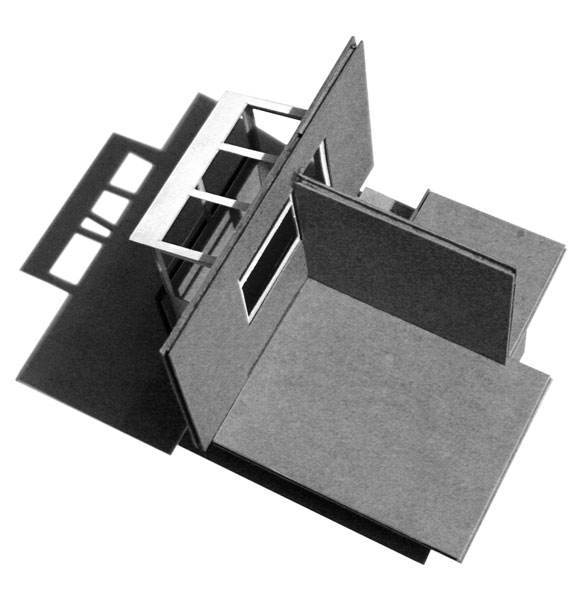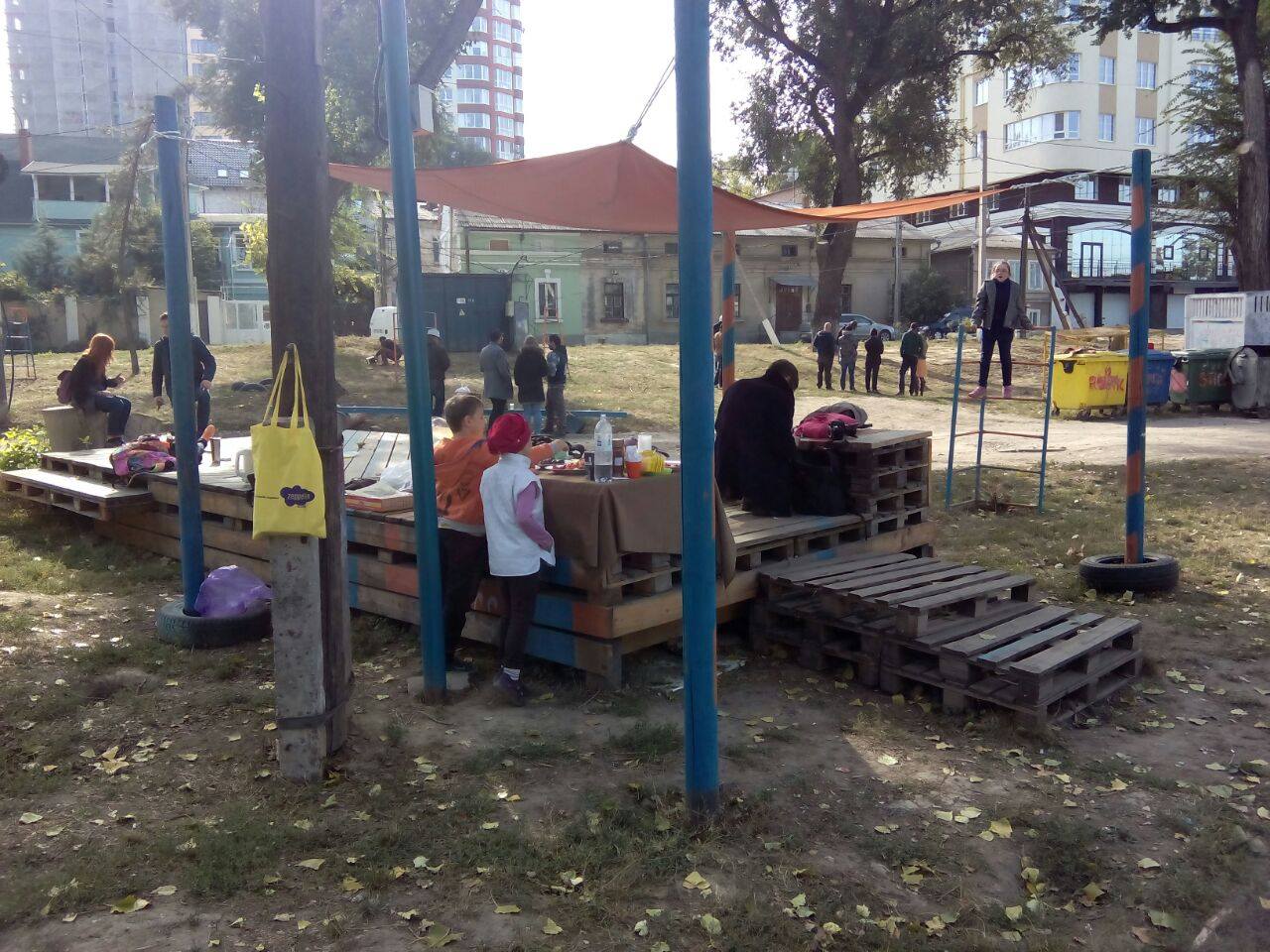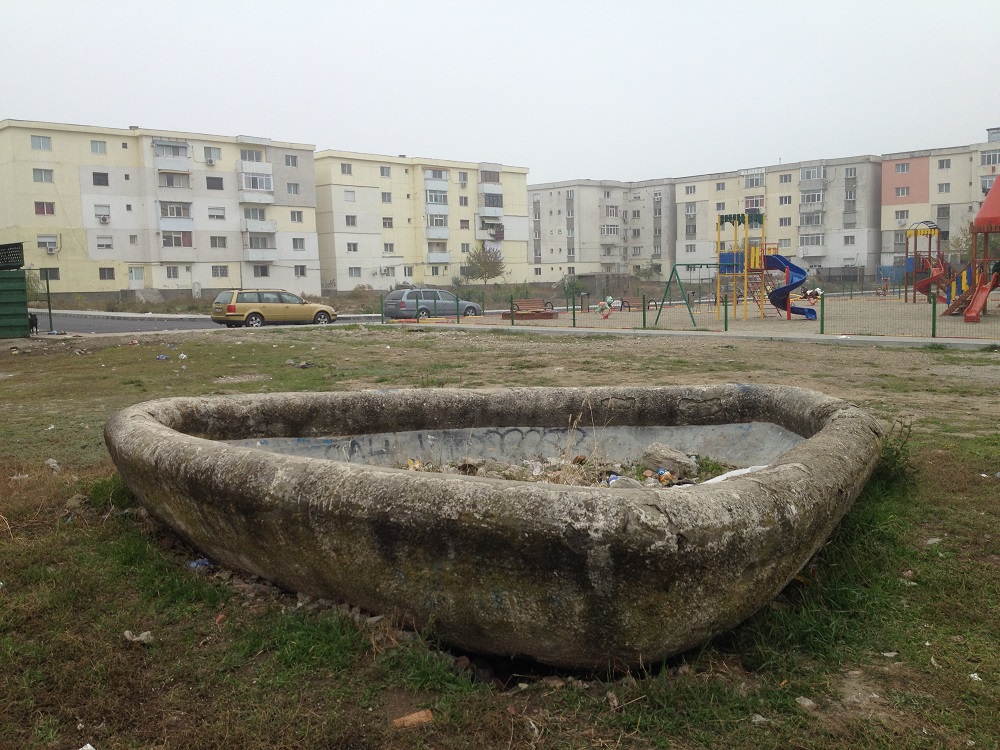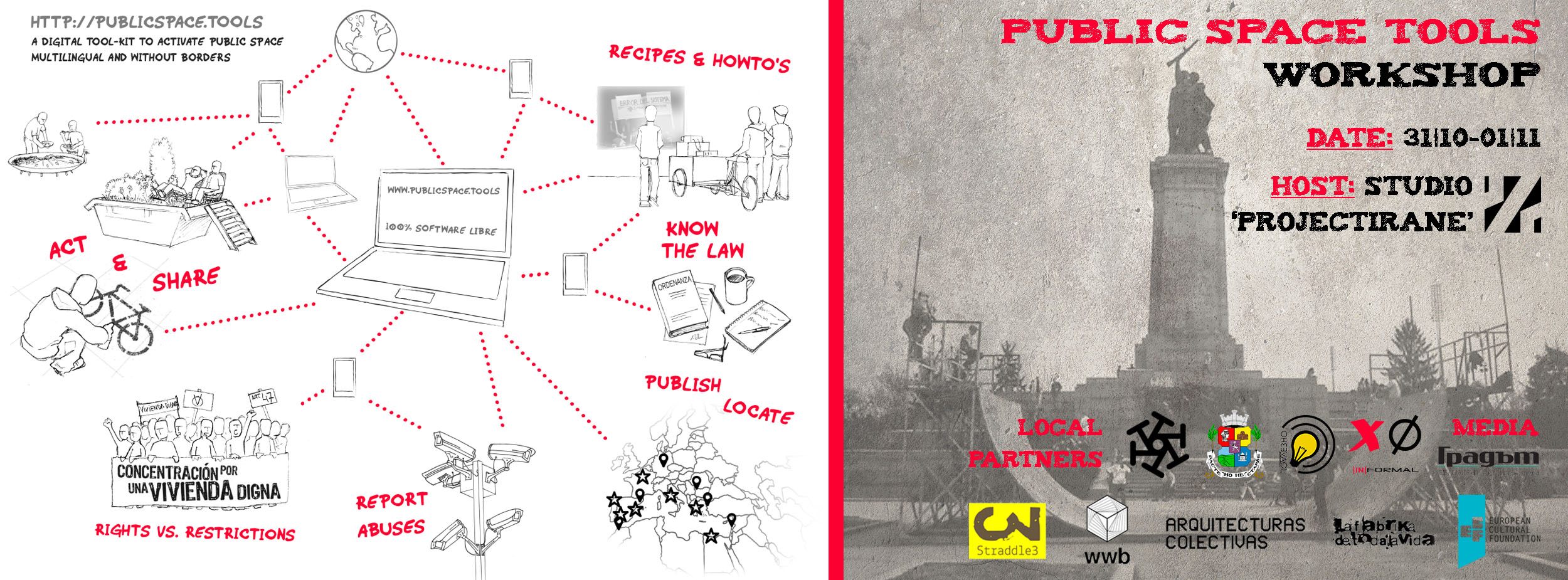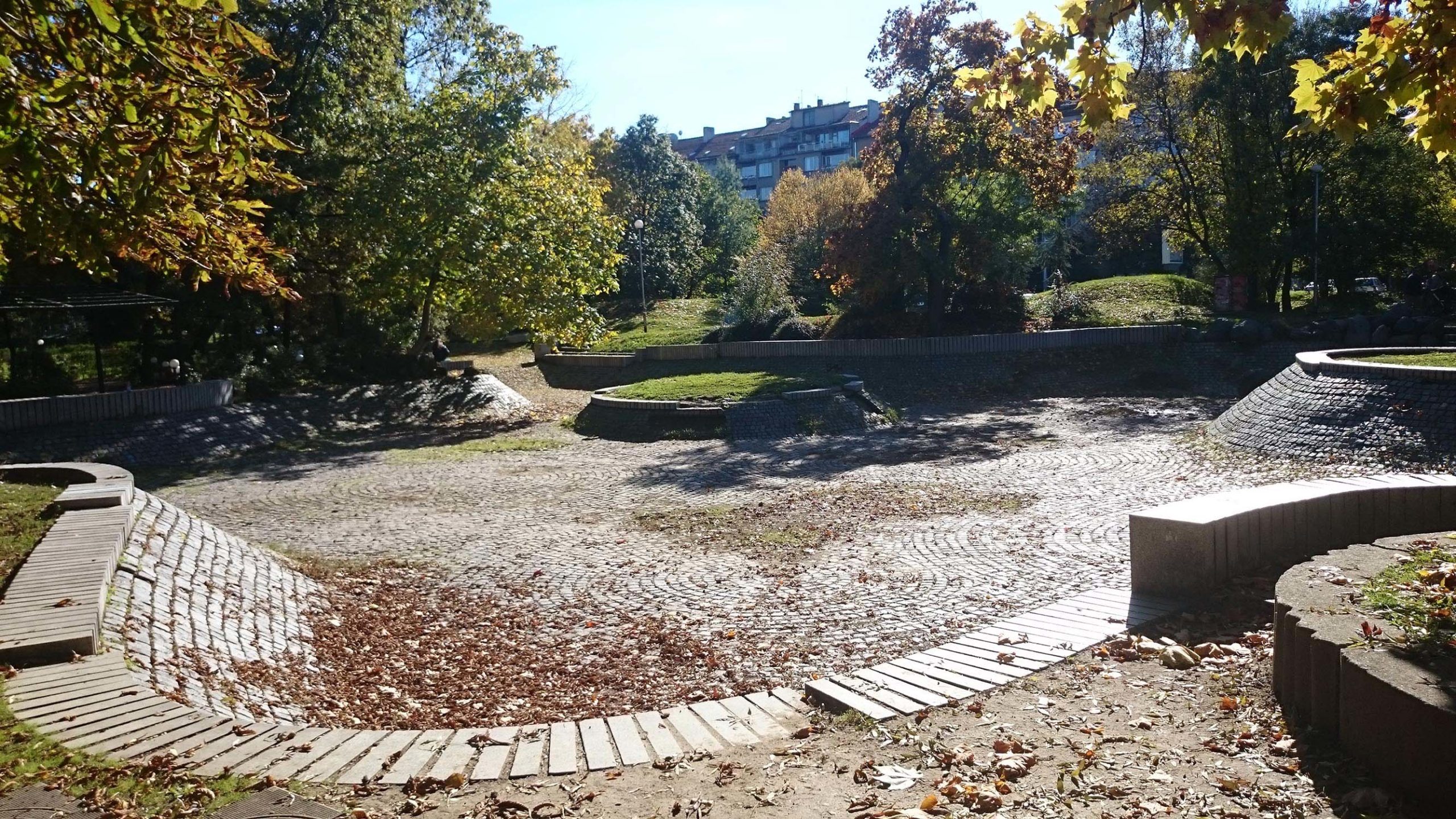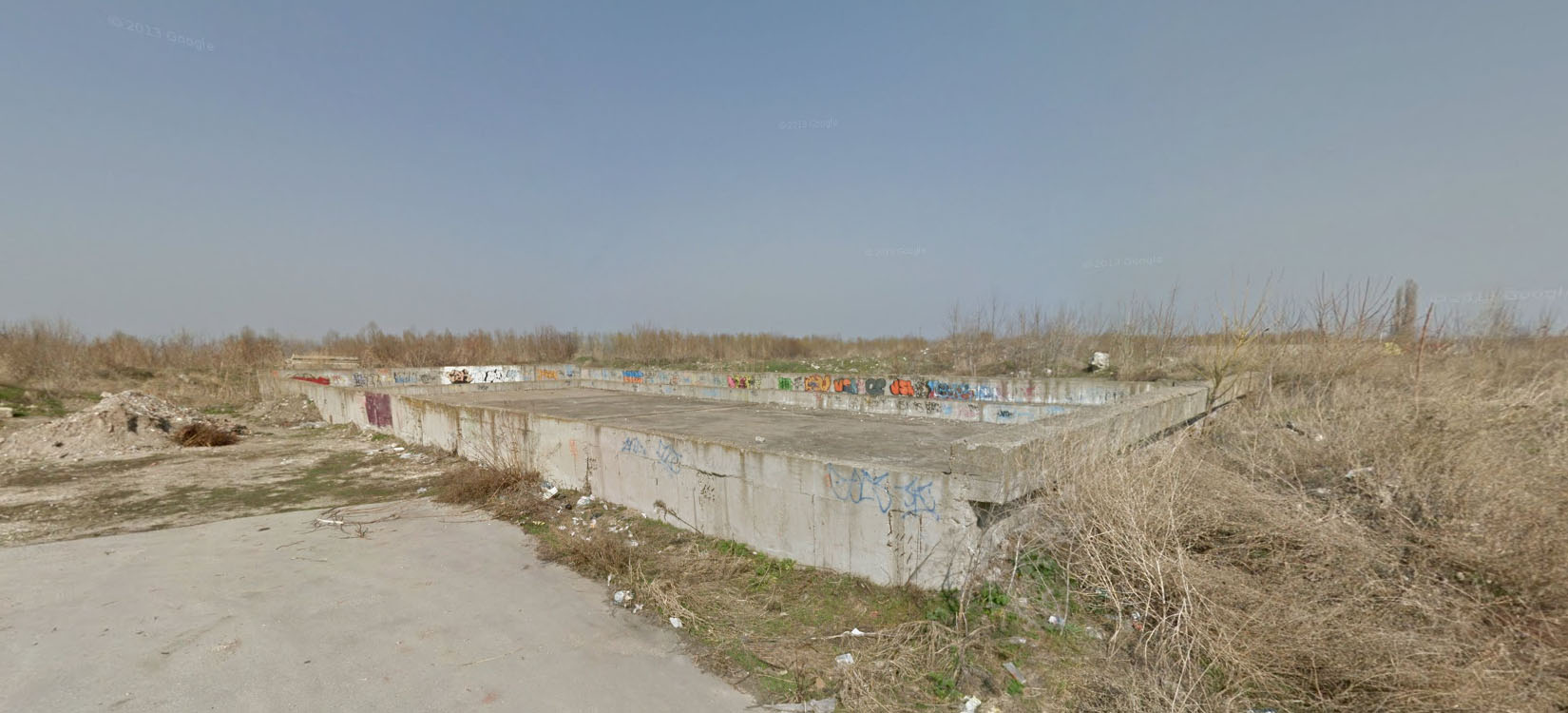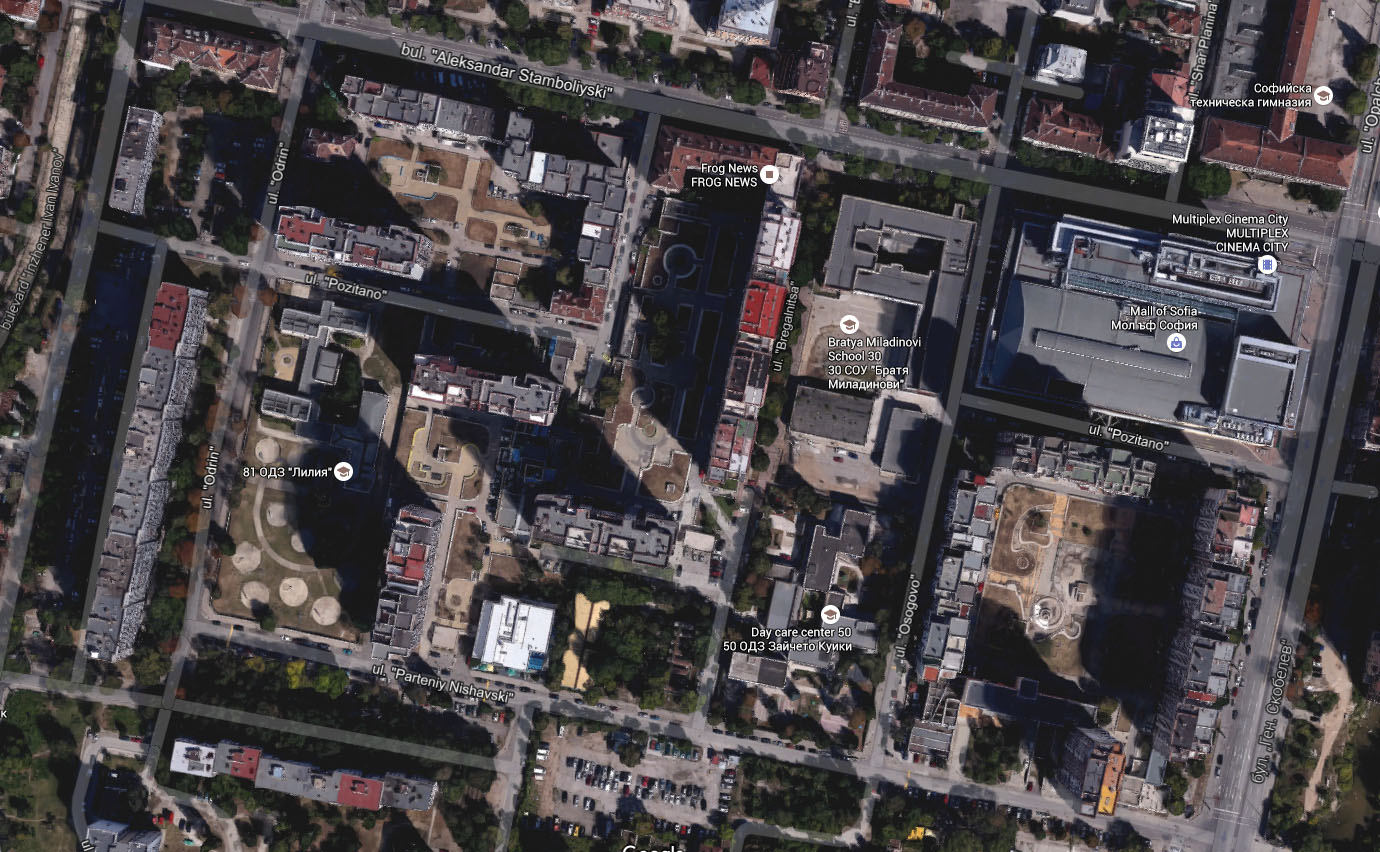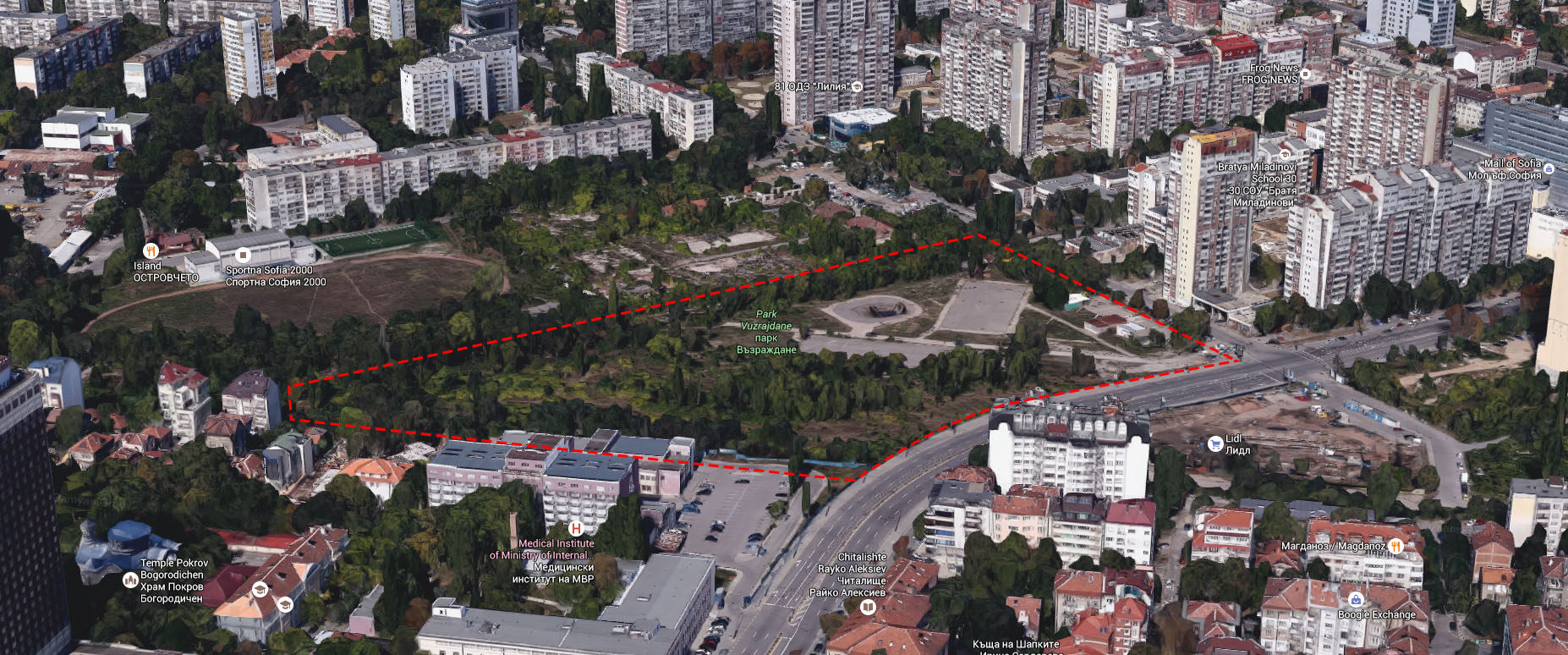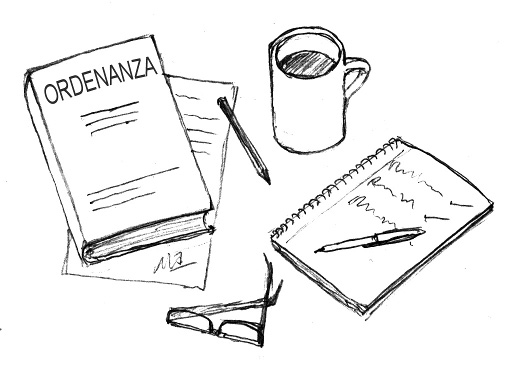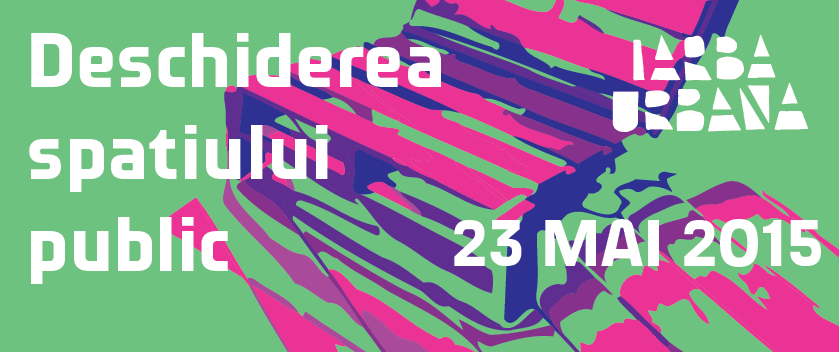The Open Flat is a public square in front of the Minsitry of Culture department building that is being used as a parking space. Several years ago, Oberliht built a replica of a Soviet communal apartment in the square and this apartment became an important space for independent art in Chisinau. The Open Flat provided numerous local and international artists with a space to perform and to organise concerts, exhibitions, movie screenings etc. Now they are working on a project to reclaim the whole square for art and create some public space for the community, to in fact remove the cars and to organise the square into a cultural zone. The ironic factor in this action plan is the main opponent of the development of the cultural square is the Ministry of Culture as they can park their cars easily.
Category: Barcelona
Zaikin Park – a park for comunity
Scroll for ES
———————-
EN
This project has its roots in the framework of the European project SPACES, and the history of Oberliht engagement in Zaikin park starts from the “Mapping the Public Space in Chisinau” workshop organized in collaboration with Eugen Panescu from Planwerk(Cluj, Romania) in July 2012. As a result of this workshop were identified 10 abandoned public spaces, but which are still keeping the potential of an opening or reactivation, located along the imaginary axis of the Cantemir Boulevard and it’s red lines. For each of this spaces was elaborated a descriptive card about the state of the space, its problems and potentialities for future, Zaikin Park was one of this spaces.
cantemir Boulevard appears in general plans of the development of the city, immediately after the second world war, the reason for building the boulevard, according to Sciusev (The architect of Chisinau between 1945-1947), was to connect the “bottom” of the city with the “top” part of the Chisinau. Nowadays the topic is still intense discussed. The construction of this boulevard would destroy the street and the social network of the city center and would include the lose of some important infrastructure for the identity of the city.
Following this short background description, the objectives of the project are:
1) Preventing the construction of the artery
2) Revitalization and rehibilitation of the park
3) Building a comunity around the park by involving the inhabitants in the activities organized in the park
—————————
ES
Este proyecto surge dentro del proyecto Europeo SPACES, y del compromiso de la asociación Oberliht en el Parque Zaikin que se inició en el taller ”Mapping the Public Space in Chisinau”, organizado con la colaboración de Eugen Panescu de Planwerk (Cluj, Romania) en Julio de 2012. Como resultado de este taller se descubrieron 10 espacios públicos abandonados pero que mantienen el potencial de poder ser abiertos o reactivados, situado a lo largo del eje imaginario del Bulevar Cantemir y sus líneas rojas.Para cada uno de estos espacios se elaboró una tarjeta descriptiva sobre el estado del espacio, sobre sus problemas y potenciales para el futuro, el Parque Zaikin fue uno de estos espacios. El Bulevar Cantemir aparece en los planes generales del desarrollo de la ciudad inmediatamente después de la segunda guerra mundial, la razón fué para la construcción del bulevar, según Sciusev (arquitecto de Chisinau entre 1945-1947) con la idea de conectar el ”fondo” de la ciudad con la parte ”superior de Chisinau. Hoy en día sigue siendo un intenso debate. La construcción de este bulevar destruiría la calle y red social del centro de la ciudad e incluiría la pérdida de algunas de sus importantes infraestructuras de la identidad de la ciudad. Tras esta pequeña descripción los objetivos del proyecto son:
1) Prevenir la construcción de la arteria
2) Revitalización y rehabilitación
3) Construir una comunidad alrededor del parque mediante la participación de los habitantes en las actividades organizadas en este.
Abandoned Public Fountain
The fountain stayed untouched since the 1980’s. This blocks of flats area is situated across the industrial area of Tecuci now almost totally distroyed. Between the buildings there are large common land areas. Very recently city of Tecuci installed a playground for children and started to build roads in order to connect the buildings. Pictures from 9th of November 2015.
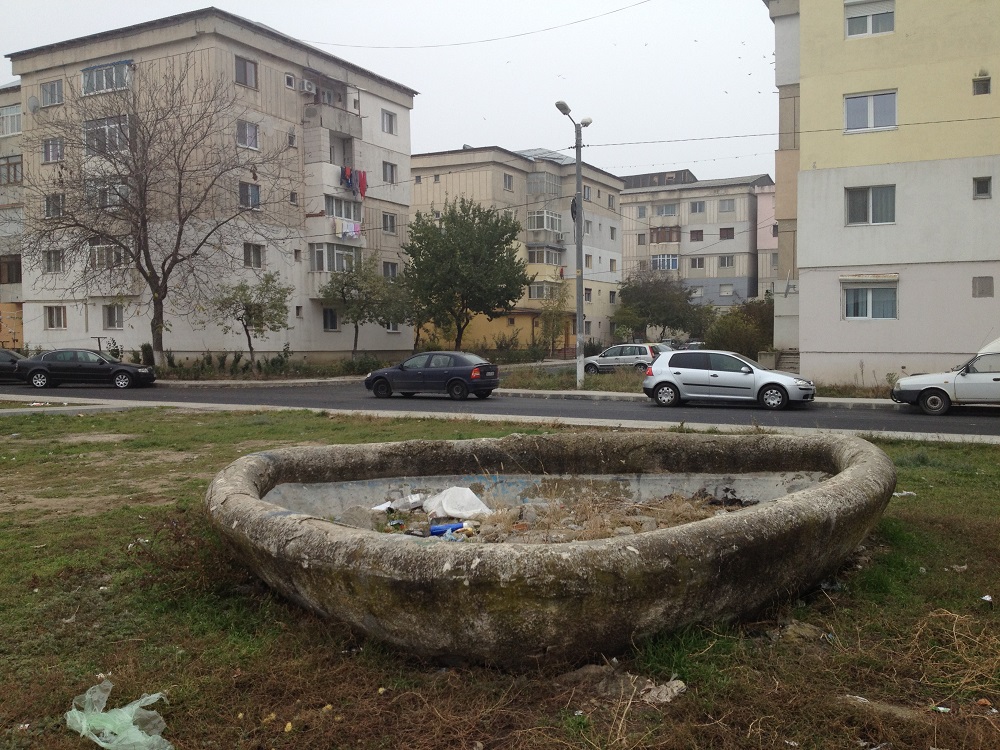
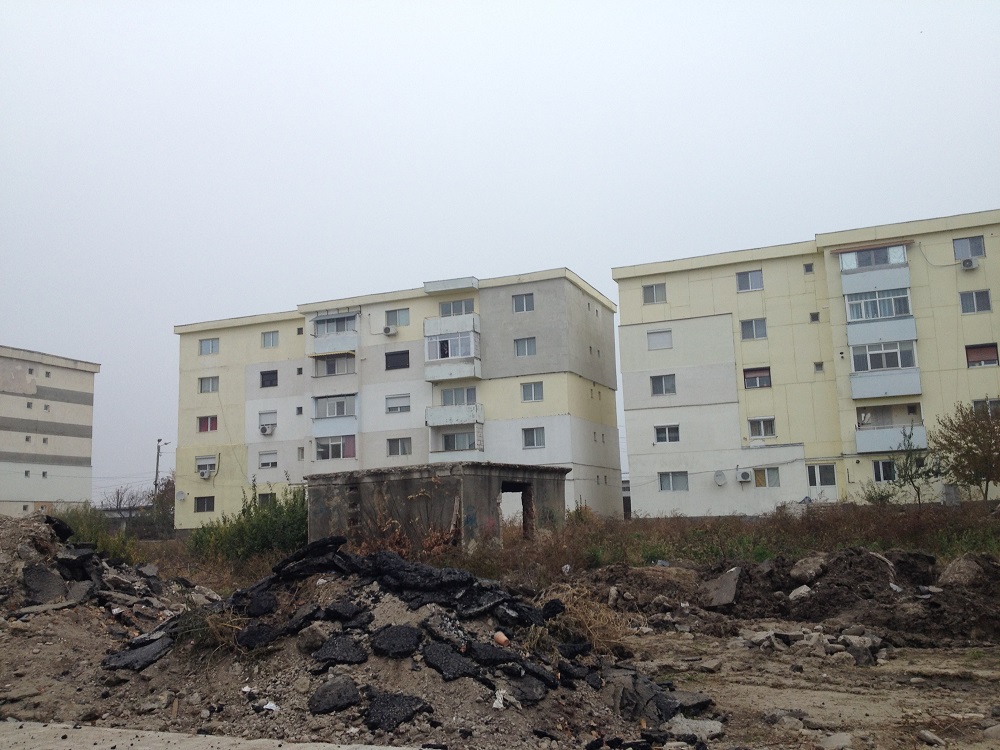
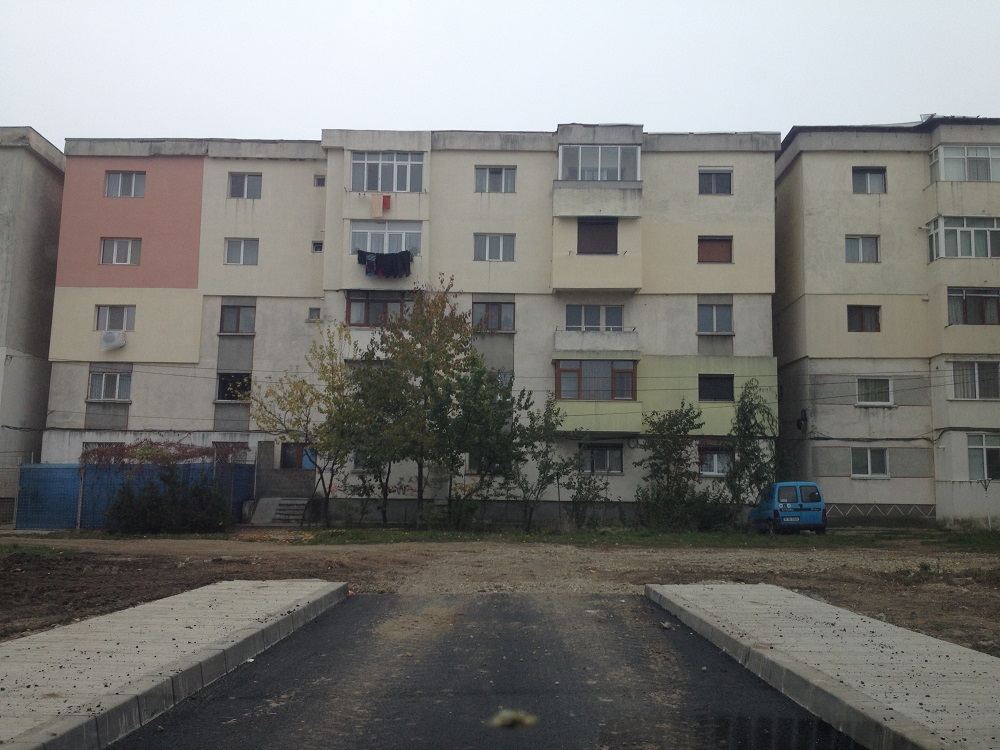
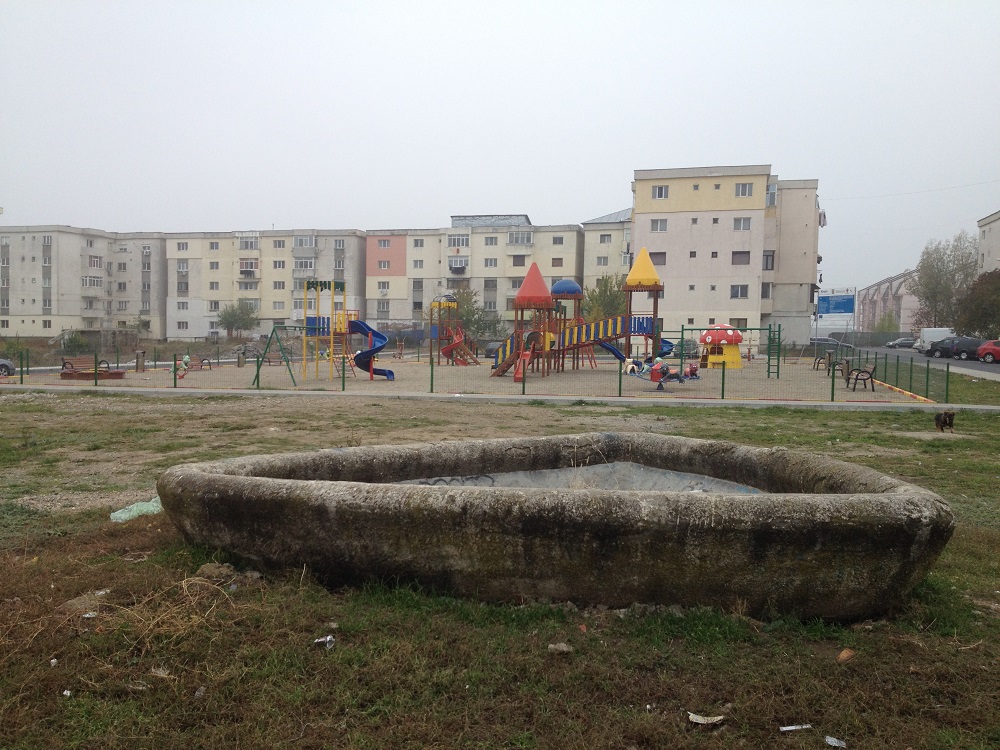
Public Space Tools @ Sofia (31|10 – 01|11)
The citizen empowerment for interventions in public space is a theme that it is for quite a while within the discourse of urban development (planning, design and architecture). However, within the context of Bulgaria until very recently this topic has been neglected. The reasons for that can be traced back in the long tradition of dealing with urban development and any other structural issues through utilitarian highly top-down approaches.
In order to deal with the necessities for research regarding this theme in the Bulgarian context, on 31 October and 1 November it has been organised a two-day workshop focused on the Public Space Tools platform. The event was held in Studio “Projectirane” at the University of Architecture, Civil Engineering and Geodesy (UACEG, Sofia). From Bulgarian side the organisation of the event was executed by the association “|IN|Formal” while the local sponsors of the workshop were the architecture / urbanism offices “ATEK” and “Urbika”.
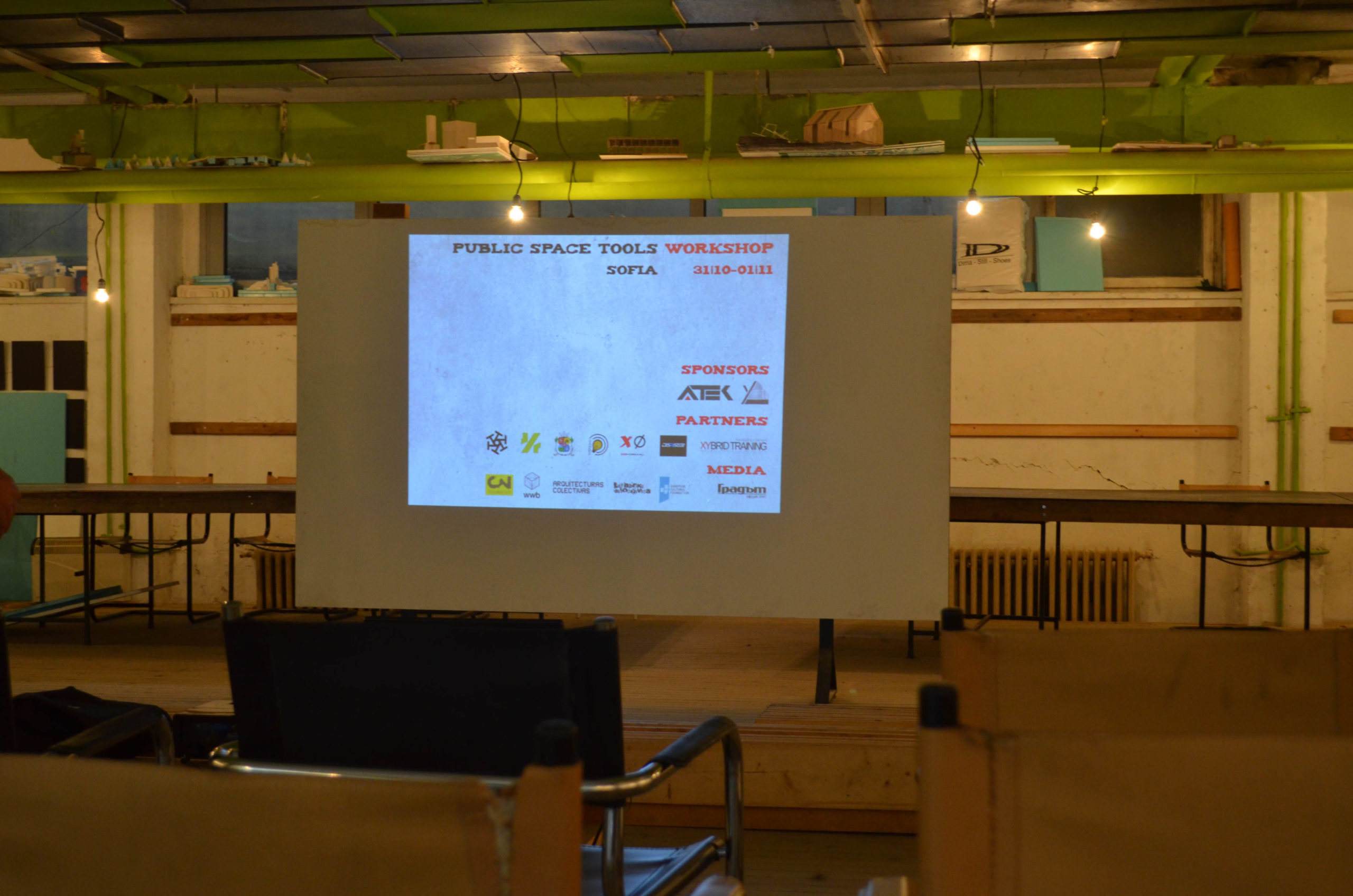
Apart from professionals and student within the sphere of architecture and urban design the event was also visited by civil activists, being experts in other socio-economic domains. Indeed, the collection of such a mixture of interested people was one of the major goals of the workshop. This environment provided possibilities for the creation of various and unusual professional connections with an intriguing potential directed to interventions in the urban space. The workshop was specifically focused on the theme of urban sports and more precisely, on urban fitness and skating. These two activities seem to have a direct relationship with the public space, the empowerment of citizens and legal issue. At the same time the theme itself allow the event to go in certain direction and provide some useful, at least modest, inputs for the platform.
For the purpose of the workshop the schedule each one of the two days was organised in a specific way. The first day was mainly consisted of interactive presentations which aimed to provide the participants with the possibility of getting familiar and exchange knowledge between them. During the second day the technical and practical part of the workshop took part. Respectively, some exercises with the online platform were executed.
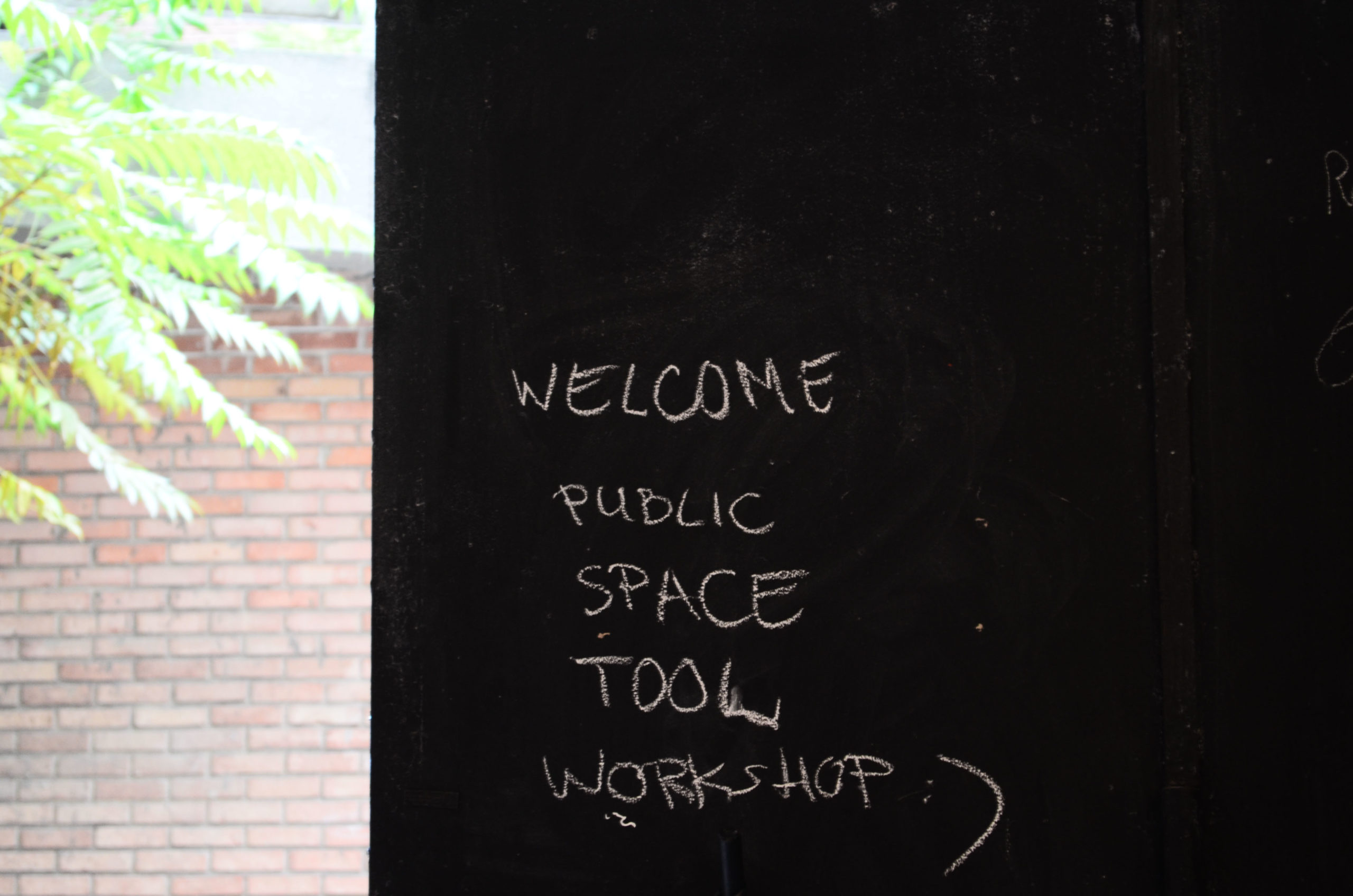
Day I | Saturday – 31.10 | Presentational Part
The first day was consisted of a series of presentation which aimed to contextualise the platform within the “right to the city” concept and the Bulgarian context. For achieving the latter goal multiple local professionals with an experience concerning unconventional urban transformations were invited. In addition, there were also presenters who shared their specific academic and legal knowledge in the field of public space as well as sport experts.
The full list of presenters is:
- David Juarez (Straddle3);
- Rossina Shatarova (Studio Projectirane);
- Valeri Gyurov (Transformatori);
- Emil Mihov & Teodora Trifonova (POdLEZNO);
- Tanya Prodanova & Martina Nenova (Architectural and Urban Spatial Development Service, Municipality of Sofia);
- Ivan Germanov (Urban Fitness – XYBRID Training);
- Georgi Spasov (Urban Skating – AISA Disaster).
The kick-off of the event was made by David Juarez, who is co-founder of Straddle3 and one of main initiators behind the PublicSpace.tools project. He introduced the participants into the theme of public space essence, its dynamics, specifics of the various uses, the “right to city” concept and legal issues in respect to it. David also made a short introduction of the PublicSpace.tools platform which was further elaborated in a later stage of the day.
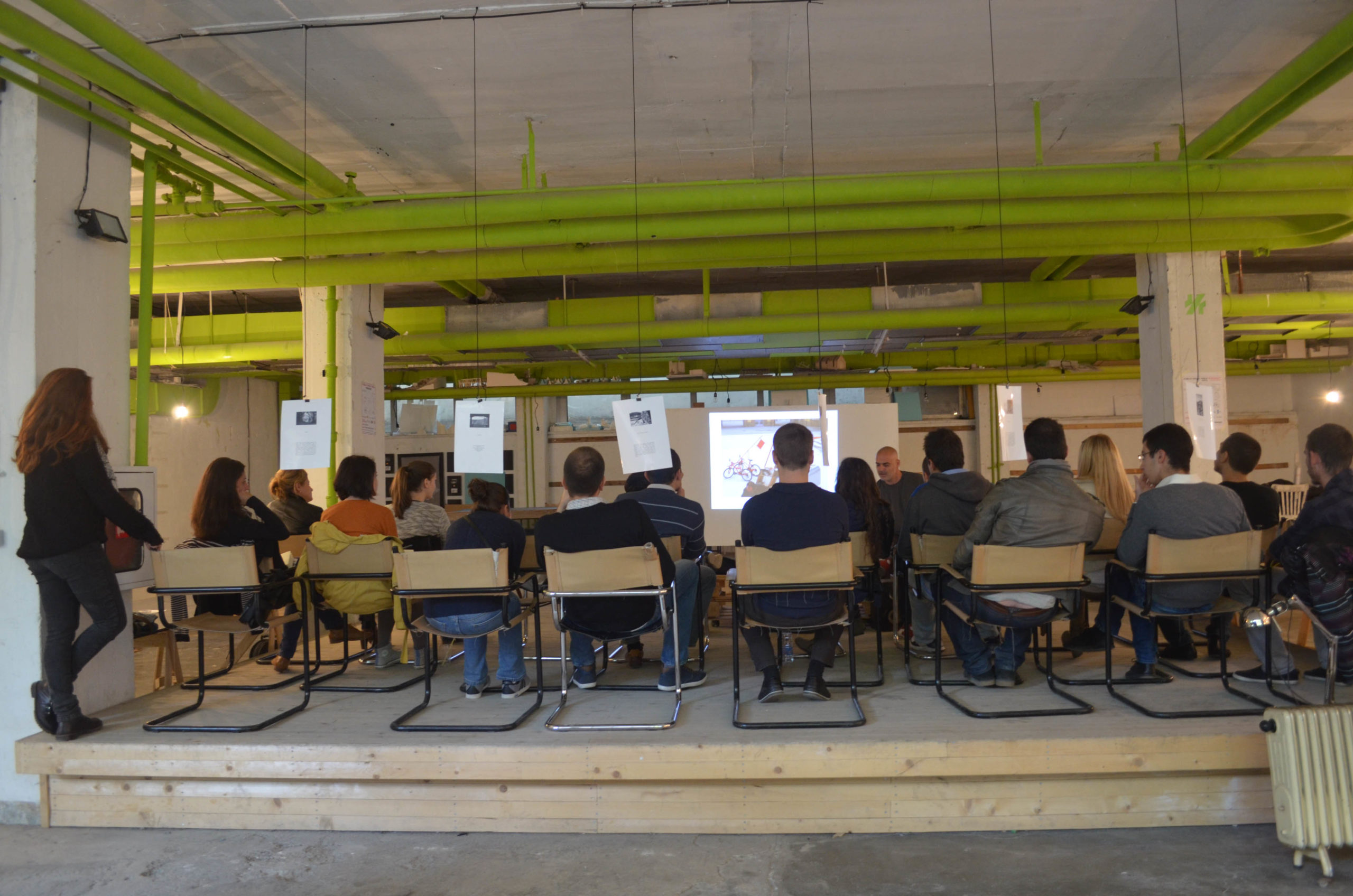
The next three presentations focused on the Bulgarian context including some intriguing examples of unconventional, bottom-up public space interventions. The first one was made by Rossina Shatarova (Studio Projectirane), who showed her point of view about the alternative ways of exploring and interacting with the public space as a way of professional education. She was followed by Valeri Gyurov, of the co-founder of Transformatori association, who presented part of their successful project and shared his experience in initiating civil engagement and participation in the urban transformational process. Emil Mihov and Teodora Trifonova (POdLEZNO) also shared their view by making a detailed overview of their physical interactions with public space in Sofia. In addition, Emil and Teodora made an interesting transition towards the following talks during the event i.e. legal frameworks within which the various types of interventions in the urban environment took place.
Indeed, the next presentation was made by Tanya Prodanova and Martina Nenova by taking their role as experts at the Architectural and Urban Spatial Development Service (AUSDS) within the structure of the municipality of Sofia. They revealed more concrete details concerning the different definitions, regulative zones and legal possibilities for public space interventions outlined by the normative documents and acts. What is more, Tanya and Martina also paid substantial attention on the required documentation and the administrative procedures which can guide and ease the physical interventions within the urban environment.
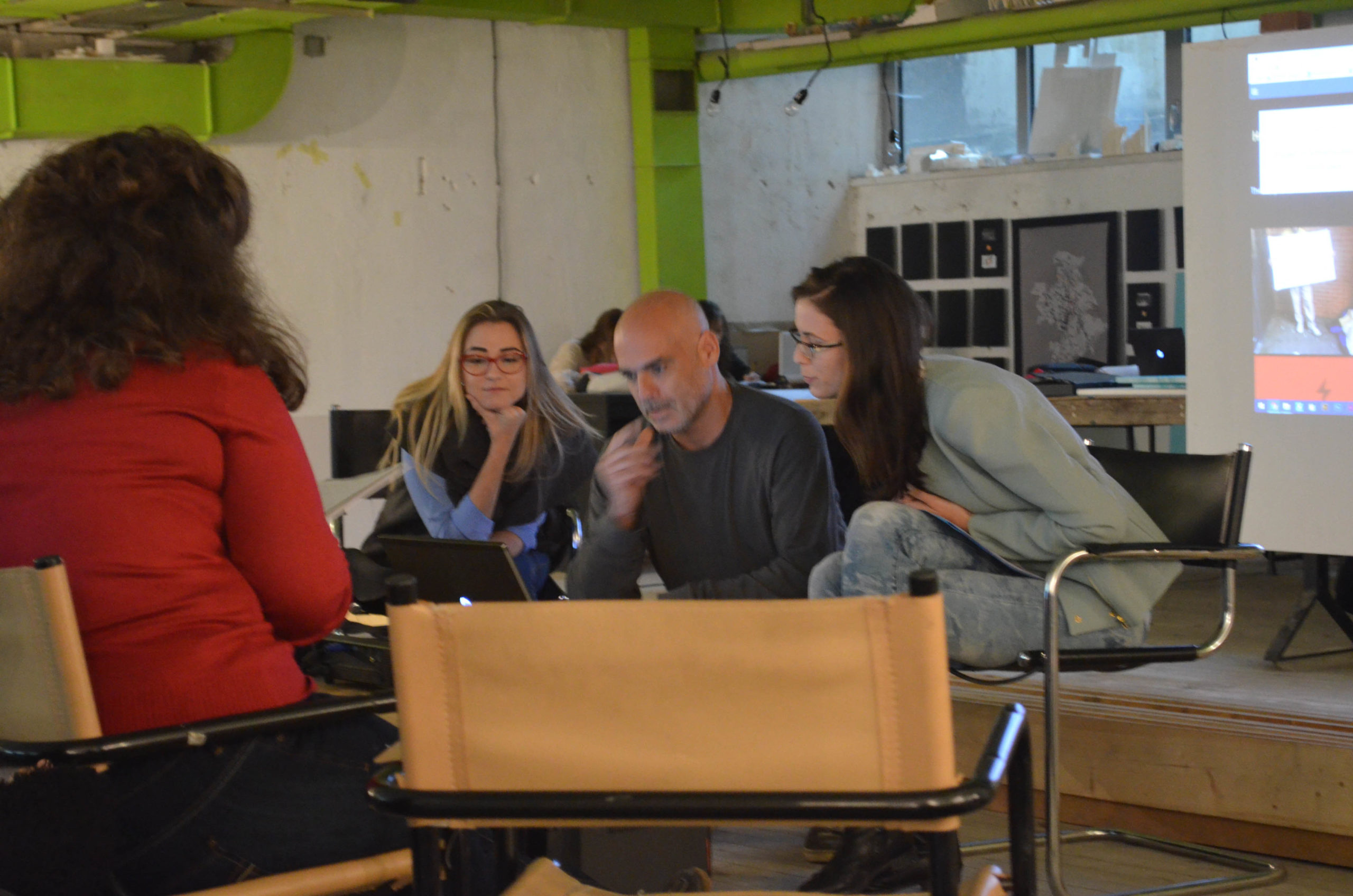
After a scheduled lunch break the last two presentations took place. They provided a slightly different and intriguing interpretation of major theme of interest i.e. the public space. The talks were led by two experts in the field of urban sports – Ivan Germanov (Urban Fitness) and Georgi Spasov (Urban Skating) who presented the perspective of the sport enthusiast within the urban environment. The interesting part was determined by the part that both Ivan and Georgi concluded with statements about public space that are generally well-accepted also by the professional and academic field of urbanism and architecture.
The last talks were followed by a debate on the themes which were discussed during the whole presentational day. As an epilogue of the first day some more specific details concerning the functions and capabilities of the PublicSpace.tools platform were made combined with examples of how to collect data and use the platform to update it. With this the first day of the event ended and the participants had their time to make a short fieldwork to gather impressions and ideas on the basis of which can use the platform on the second day of the workshop.
Day II | Sunday – 01.11 | Practical Part
The second day of the event continued from the point where the first one finished. After the theme of the citizens’ empowerment was defined in contextual, conceptual, professional and legal terms the second part of the workshop focused on the technical and practical exploration of the PublicSpace.tools platform.
Since the platform was a project which in beta version at the time of the event it was aimed the participants to exercise and test its functionality. By doing so and respectively reflect on their user experience they contributed to the further technical development of the toolkit. Despite this, the participants were provided with a log-in access through which they had the possibility to explore the added content. What is more, after being granted with an individual access they could prioritise certain part of the general content in respect to their specific context and interest.
During the exercises all details of the platform including technology, structure, functionality and types of content were reviewed. In the span of few hours the numerous possibilities for the platform’s enhancement were discussed in a form of informal discussion by the various professionals who were present – architects, urban designers, computer specialists and sport enthusiasts. In addition, the participants shared their view upon how the platform can be useful in achieving different goals.
In general, the presented content during the event and the created setting provided a quite fertile environment for knowledge exchange. In these terms the workshop was highly evaluated by the visitors who took part. The mixture of presented information certainly granted the workshop guests with an intriguing opportunity to enrich their knowledge regarding the theme of citizen empowerment and the “right to the city” concept. Moreover, the numerous professional relationships which occurred during the workshop were positives that might have a long-term impact and optimistic prerequisite concerning further development of the thematic research and the actual application of the PublicSpace.tools platform in Bulgarian context.
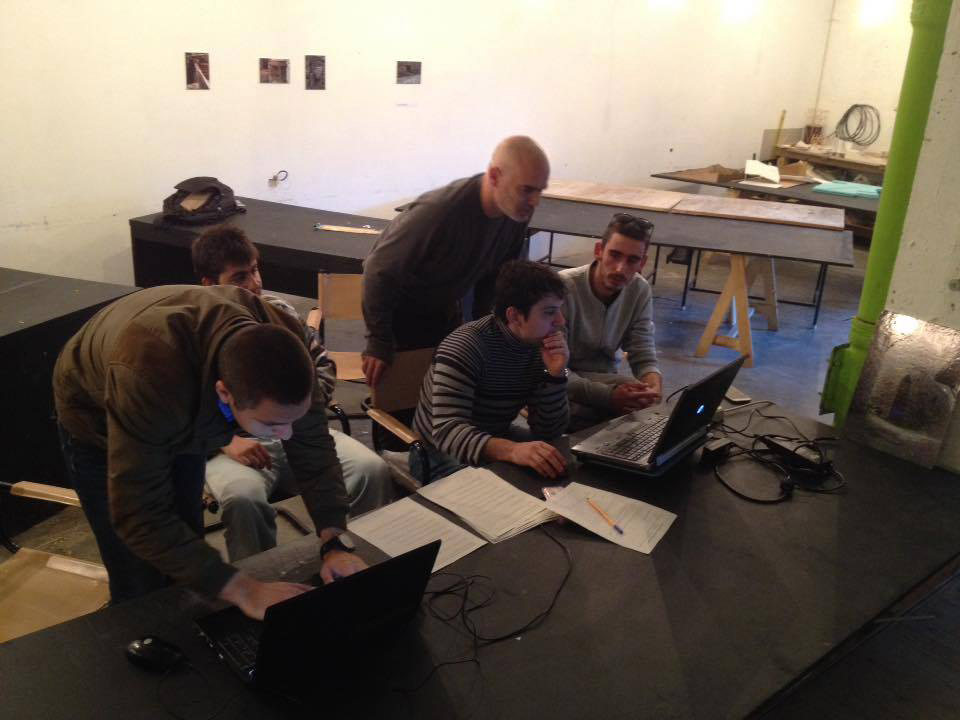
Related links:
- publicspace.tools/#/posts/285
- publicspace.tools/#/posts/286
- publicspace.tools/#/posts/290
Knyazheska Garden (Sofia)
Condition
The location is an underutilized urban space which is originally designed to be an water pond. There are certain possibilities to adjust it for the use of urban skating. The existing forms, location (traditional skating gathering point – see the photo) and transport accessibility provide good conditions for becoming a vital place for the skating scene in the city of Sofia.
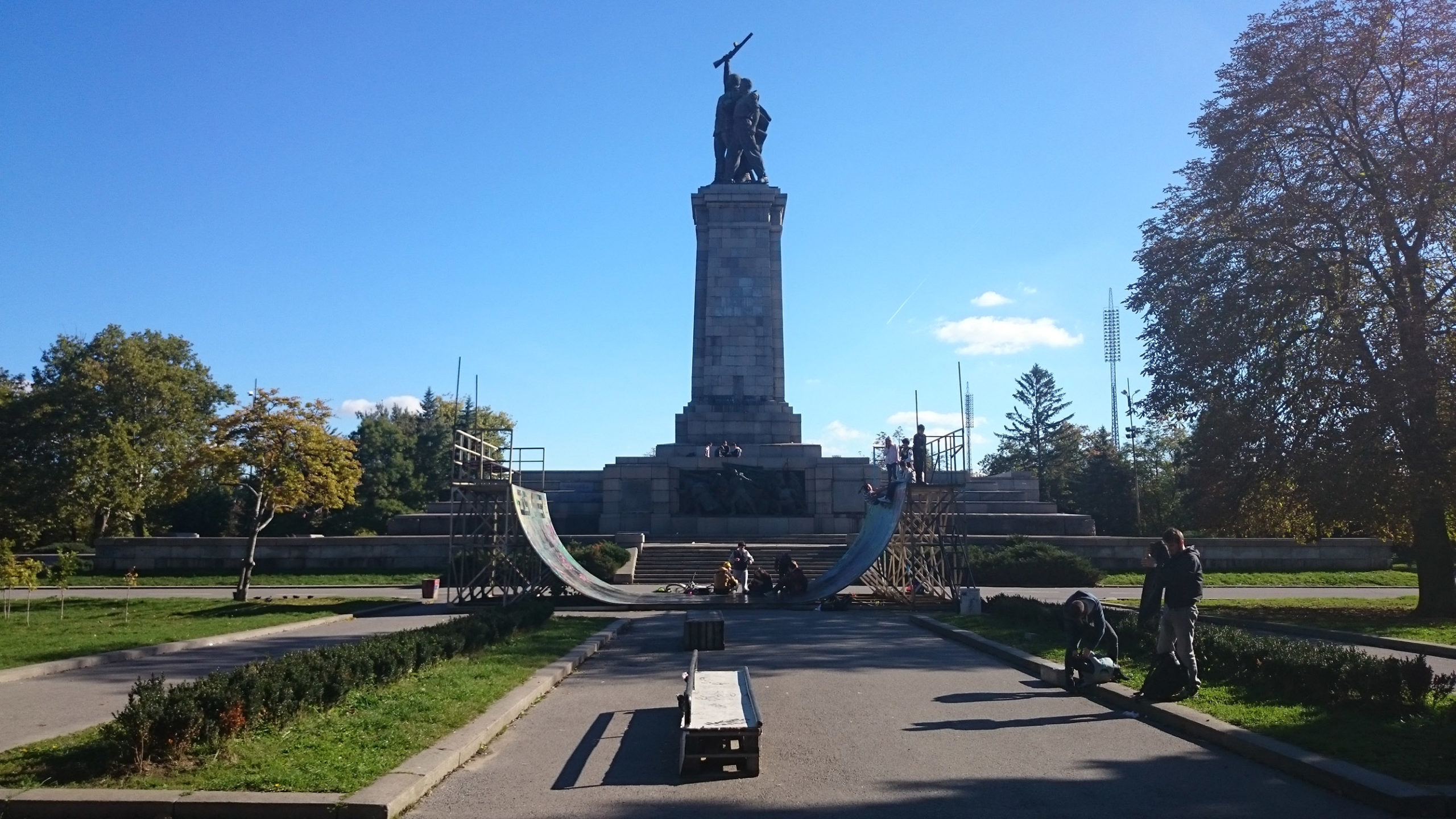
How-to Manual / Tips
1) Promote the idea to the skating community in Sofia and verify if there is a support for the idea;
2) Get familiar with the legal framework in respect to the particular public space – the park is defined as public space within zone six by the “Ordinance on movable objects for advertising, information and monumental decorative elements and advertising activities on the territory of Sofia Municipality”;
3) Explore technically possible spatial / surface adaptations to facilitate skating usage;
– The paves can be replaced with smooth textile to be used by skaters but also retain the possibility the structure to be also utilized as a pond.
Public Space Revitalisation
This abondened place has stayed untouched since years. It is located in a very nice geographical location on the south bank of Danube river. However, the general condition of the wider area is quite bad. This suggests that improvement of the area and transformation into a vital place it will be quite costly.
On the other hand, Silistra is town where there is a high degree of scarcity in regards to public amentities so a hypothetical intervention can cause a substantial enhancement of the public space in the town. The unfinished spatial forms assume that the area is suitable to be adapted for a public pool something that can be combined with an improvised urban beach on the bank of the river.
Zona B-5, spaces in-between apartment buildings
Condition
Typically for most of the public place within / nearby large appartment buildings the existing urban spaces are underutilised and under-maintained. In the specific case the environment is consisted of multiple urban design elements which can be used for multiple purposes.
Potential
Considering the fact that these apartment buildings are considerably spacious and inhabited with large number of citizens a possible improvement of the environment can have social effect. It seems that interventions through community engagement could improve essential qualities of the urban areas such as social cohesion.
The existing intersting spatial forms provide the potential for creating integrated skating plazas which will simultaneously improve the physical quality and the activity degree of the spaces.
How-to manual
1) Promote the idea to the local community, the residents and verify if there is a support for the idea;
2) Get familiar with the legal framework in respect to the particular public space – the park is defined as public space within zone six by the “Ordinance on movable objects for advertising, information and monumental decorative elements and advertising activities on the territory of Sofia Municipality”;
3) Get in touch with the mayor of the district and discuss possibilities while incorporating local citizens during the negotiations.
Related Links:
Park Vuzrazhdane, Zona B-5
Condition
The park has been underutilised for years and it is currently in unsatisfactory physical condition. Due to this fact the place has become a junkyard which hampers the sense of security within the area. The park is referred to some terrible urban legends in Sofia that additionally influences the image of the area.
In the recent past a skate ramp was located within the park and thus, the area was a notable place for the skating scene in Sofia. However, the facility was removed and nowadays the park is only occasionally for temporal establishment of circus installations.
Potential
The condition of the park urges for some interventions. Within the existing setting the place can become a vital public space due to the lack of green areas in this part of the city. For this purpose it is essential the citizens to reclaim the park for certain uses. A structural bottom-up intervention can be a great way to recover the connection between the local communities and the urban environment. The skating traditions within the park can be taken in consideration in a process of urban revitalisation.
Lleis i reglaments a Barcelona
1.1 BY-LAW FOR THE USE OF THE PUBLIC THOROUGHFARE (municipal)
The Barcelona City Council “Ordinance for the Use of the Public Thoroughfares and Public Space” is an archetypal by-law regulating activities in public space.
The by-laws that traditionally regulate the use of public space are commonly known as “public space by-laws”, which is the name that we will use in this guide. In Barcelona, the official name of this by-law is the “Ordinance for the Use of Public Thoroughfares and Public Space”, introduced in November 1998. The full text (in Catalan) can be found here.
The Statement of Purpose offers several interesting arguments suggesting that it is intended to be interpreted in a flexible and tolerant manner. These sections are liable to be quoted and used in negotiations, and to that end we include them here:
“The regulation of peaceful co-existence on the streets cannot be implemented in a rigid and predetermined manner, with the exception of some items that must be strictly enforced, such as those pertaining to cleanliness. Citizen activities that affect public space are extremely varied, and often unpredictable.”
“The difficulty in exhaustively and precisely defining what is permitted and what is prohibited does not just arise from the diversity of activities carried out in public spaces. It is also influenced by the historical differences in terms of what is acceptable or appropriate, by the rapid evolution of habits, and by the difficulty in foreseeing the public and private interests that must be reconciled in each case (…) For this reason, the by-laws are intended to be a flexible regulation, based on general clauses, that can be adapted to varying circumstances. In this sense, the by-laws define basic guidelines for behaviour, and trust the administrators and the material enforcers to concretely determine their precise scope.”
1.2 CIVIC BY-LAW (municipal)
The “Ordinance of Measures to Promote and Guarantee Citizen Co-existence in the Public Space” was introduced by Barcelona City Council in 2005 to toughen the conditions imposed in the existing by-law (on the use of the Public Thoroughfare). It became a precursor for subsequent by-laws implemented by City Councils around Spain, supposedly based on the notions of discouraging Anti-Social Behaviour and encouraging Peaceful Co-Existence.
The Civic By-Law is a controversial ordinance intended to regulate the general lines of peaceful co-existence, as Barcelona City Council understood them at the time of drafting, and is justified by its ability to adapt to social changes arising from globalisation. The full text (in Catalan) can be found here.
1.3 REGULATIONS ON PUBLIC ENTERTAINMENT AND RECREATIONAL ACTIVITIES (regional)
“Law 11/2009, of 6 July, on public entertainment and recreational activities” is a law implemented by the autonomous community of Catalonia, but mostly expected to be enforced by municipal governments.
This Law places the emphasis on defining the legislative margins of municipal regulations and by-laws in order to establish additional requirements other than those of a general nature. Generally speaking, public performances and recreational activities, as well as the venues open to the public in which they are carried out, are subject to municipal licences or, in exceptional cases, to authorisation by the Catalan government. Nonetheless, to simplify administrative intervention as much as possible, the Law authorises Catalan government regulations and municipal by-laws so as to establish the obligatory requirement of prior notification in cases where the legislation does not specifically require authorisation or licence, or even to attain exemption from the requirement of a licence or authorisation for specific types of public performances or recreational activities, particularly if they have limited capacity or a special cultural or artistic value.
1.4 LAW REGULATING THE RIGHT TO GATHER AND DEMONSTRATE (national)
“Organic Law 9/1983, of 15 July, regulating the Right to Assembly”.
Article 21 of the Spanish Constitution states that:
1. The right to peaceful, unarmed assembly is recognised. The exercise of this right does not require prior authorisation.
2. In the cases of meetings in places of public transit and of manifestations prior notification shall be given to the authorities, which can only forbid them when there are reasons based on disturbances of public order with danger for persons or property.
This constitutional right is regulated through Organic Law 9/1983, of 15 July, pertaining to the Right to Gather (the full text can be found here).
1.5 TECHNICAL STANDARDS FOR TEMPORARY STRUCTURES (European)
“Spanish Standards for Temporary Structures, Tents, Safety, UNE-EN 13782”, which is the Spanish adaptation of European Standard EN 13782:2005, setting out the guidelines for temporary demountable structures.
The “Spanish Standards for Temporary Structures, Tents, Safety, UNE-EN 13782″, is the Spanish adaptation of European Standard EN 13782:2005, setting out the guidelines for temporary demountable structures.
It is obligatory for the standardisation bodies of the following countries to implement this European guideline: Austria, Belgium, Czech Republic, Cyprus, Denmark, Estonia, Finland, France, Germany, Greece, Hungary, Iceland, Italy, Ireland, Latvia, Lithuania, Luxemburg, Malta, Netherlands, Norway, Poland, Portugal, United Kingdom, Slovakia, Slovenia, Spain, Sweden and Switzerland.
This European guideline sets out the security measures that must be complied with during the design, calculation, manufacture, installation, maintenance, use, verification, and testing of mobile structures and temporary tents with a floor area greater than 50 m2. In the case of tents or temporary structures with a floor level below 50 m2, it is sufficient for the manufacturer to issue a document setting out the behaviour of the covering fabric in the event of fire, and the stability of the structure.
1.6 ORGANIC LAW ON THE PROTECTION OF PUBLIC SAFETY, ALSO KNOWN AS THE ‘GAG LAW’
At the time of writing the last edition of this guide, the Congress of Deputies is debating the new Law on Citizen Safety, which is intended to replace Organic Law on 1/1992, of 21 February, on the Protection of Public Safety, also known as the “Corcura Law”.
For a detailed critical study we recommend the work of the Platform against the Reform of the Criminal Code, the Law of Citizen Safety, and the Law of Private Safety (http://nosomosdelito.net), which we have used as the basis for this short summary that aims to give an initial idea of the possible consequences of the implementation of this law on activities in public space.
1.7 LEGISLATION ON SPORTS AND RELATED ACTIVITIES (national)
“Sports Law 10/1990, of 15 October 1990”
iarba urbana
Here I will write some text about the poject.




